MaryAnn Bernal's Blog, page 125
January 16, 2016
Why the Romans were not quite as clean as you might have thought
Ancient Origins
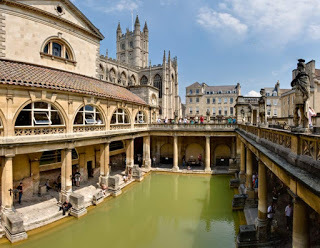 Prior to the Romans, Greece was the only part of Europe to have had toilets. But by the peak of the Roman Empire in the 3rd century AD, the Romans had introduced sanitation to much of their domain, stretching across western and southern Europe, the Middle East and North Africa. Their impressive technologies included large multi-seat public latrines, sewers, clean water in aqueducts, elegant public baths for washing, and laws that required towns to remove waste from the streets. But how effective were these measures in improving the health of the population?
Prior to the Romans, Greece was the only part of Europe to have had toilets. But by the peak of the Roman Empire in the 3rd century AD, the Romans had introduced sanitation to much of their domain, stretching across western and southern Europe, the Middle East and North Africa. Their impressive technologies included large multi-seat public latrines, sewers, clean water in aqueducts, elegant public baths for washing, and laws that required towns to remove waste from the streets. But how effective were these measures in improving the health of the population?
Modern clinical research has shown that toilets and clean drinking water decrease the risk of human gastrointestinal infections by bacteria, viruses and parasites. We might, therefore, expect that this area of health would improve under the Romans compared with the situation in Bronze Age and Iron Age Europe, when these sanitation technologies did not exist. Similarly, we might also expect that ectoparasites such as fleas and body lice might become less common with the introduction of regular bathing and personal hygiene.
A new study I’ve published in Parasitology has brought together all the archaeological evidence for intestinal parasites and ectoparasites in the Roman world in order to evaluate the impact of Roman sanitation technology upon health. The study compares the species of parasites present before the Romans in the Bronze Age and Iron Age, and also after the Romans in the early medieval period.
Rats, Exploding Toilet Seats and Demons of the Deep: The Hazards of Roman Sewers Rakhigarhi now the biggest Harappan site after two new mounds discovered Archaeologists discover ancient Rome may have been much larger than previously believed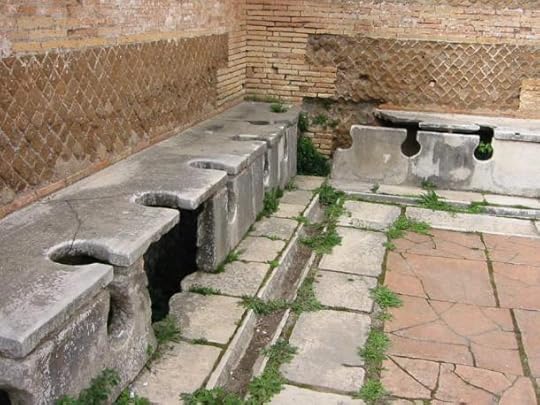 Roman public toilets, Ostia Antica. (
Public Domain
)I found a number of surprising findings. Unexpectedly, there was no drop in parasites spread by poor sanitation following the arrival of the Romans. In fact, parasites such as whipworm, roundworm and dysentery infections gradually increased during the Roman period instead of falling as expected. This suggests that Roman sanitation technologies such as latrines, sewers and clean water were not as effective in improving gastrointestinal health as you might think.
Roman public toilets, Ostia Antica. (
Public Domain
)I found a number of surprising findings. Unexpectedly, there was no drop in parasites spread by poor sanitation following the arrival of the Romans. In fact, parasites such as whipworm, roundworm and dysentery infections gradually increased during the Roman period instead of falling as expected. This suggests that Roman sanitation technologies such as latrines, sewers and clean water were not as effective in improving gastrointestinal health as you might think.
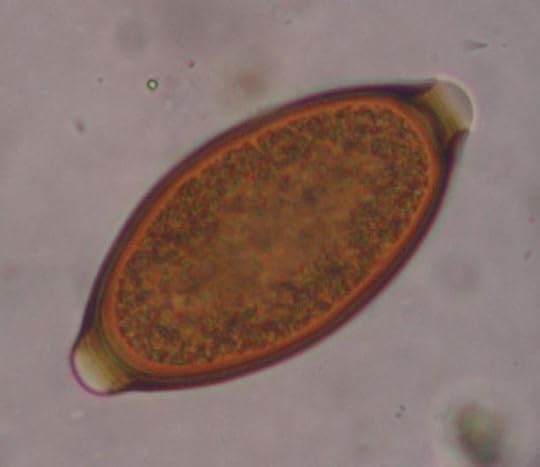 Whipworm egg. (
CC BY-SA 3.0
)It is possible that the expected benefits from these technologies was counteracted by the effects of laws requiring waste from the streets to be taken outside towns. Texts from the Roman period mention how human waste was used to fertilise crops in the fields, so parasite eggs from human faeces would have contaminated these foods and allowed reinfection of the populations when they ate.
Whipworm egg. (
CC BY-SA 3.0
)It is possible that the expected benefits from these technologies was counteracted by the effects of laws requiring waste from the streets to be taken outside towns. Texts from the Roman period mention how human waste was used to fertilise crops in the fields, so parasite eggs from human faeces would have contaminated these foods and allowed reinfection of the populations when they ate.
The second surprising finding was that there was no sign of a decrease in ectoparasites following the introduction of public bathing facilities to keep the population clean. Analysis of the number of fleas and lice in York, in northern England, found similar numbers of parasites in Roman soil layers as was the case in Viking and medieval soil layers. Since the Viking and medieval populations of York did not bath regularly, we would have expected Roman bathing to reduce the number of parasites found in Roman York. This suggests that Roman baths had no clear beneficial effect upon health when it comes to ectoparasites.
Man Intent on Fixing Toilet Uncovers Centuries-Old Subterranean World Beneath his Basement Money Does Not Stink: The Urine Tax of Ancient Rome Lifestyles of the rich and famous in biblical times The head of fish tapeworm, Diphyllobothrium latum. (
CC BY-SA
)The fish tapeworm also became more common in Europe under the Romans. In Bronze Age and Iron Age Europe fish tapeworm eggs have only been found in France and Germany. However, under the Roman Empire, fish tapeworm was found in six different European countries. One possibility that would explain the apparent increase in distribution of the parasite is the adoption of Roman culinary habits.
The head of fish tapeworm, Diphyllobothrium latum. (
CC BY-SA
)The fish tapeworm also became more common in Europe under the Romans. In Bronze Age and Iron Age Europe fish tapeworm eggs have only been found in France and Germany. However, under the Roman Empire, fish tapeworm was found in six different European countries. One possibility that would explain the apparent increase in distribution of the parasite is the adoption of Roman culinary habits.
One popular Roman food was garum, an uncooked fermented fish sauce made from fish, herbs, spices and salt. We have archaeological and textual evidence for its manufacture, storage in sealed clay pots, transport and sale across the empire. It is possible that garum made in northern Europe would have contained fish infected with fish tapeworm, and when traded to other parts of the empire this could have infected people living outside the original area endemic for the disease.
This is not to say that Roman sanitation was a waste of time. It would have been useful having public latrines so that people in town would not have had to return home to use the toilet. A culture of public bathing would have made people smell better too. However, the archaeological evidence does not indicate any health benefit from this sanitation, but rather that Romanisation led to increase in certain parasite species due to trade and migration across the empire.
Featured image: Roman baths in Bath, England ( CC BY 2.5 )
By: Piers Mitchell / The Conversation
 Prior to the Romans, Greece was the only part of Europe to have had toilets. But by the peak of the Roman Empire in the 3rd century AD, the Romans had introduced sanitation to much of their domain, stretching across western and southern Europe, the Middle East and North Africa. Their impressive technologies included large multi-seat public latrines, sewers, clean water in aqueducts, elegant public baths for washing, and laws that required towns to remove waste from the streets. But how effective were these measures in improving the health of the population?
Prior to the Romans, Greece was the only part of Europe to have had toilets. But by the peak of the Roman Empire in the 3rd century AD, the Romans had introduced sanitation to much of their domain, stretching across western and southern Europe, the Middle East and North Africa. Their impressive technologies included large multi-seat public latrines, sewers, clean water in aqueducts, elegant public baths for washing, and laws that required towns to remove waste from the streets. But how effective were these measures in improving the health of the population? Modern clinical research has shown that toilets and clean drinking water decrease the risk of human gastrointestinal infections by bacteria, viruses and parasites. We might, therefore, expect that this area of health would improve under the Romans compared with the situation in Bronze Age and Iron Age Europe, when these sanitation technologies did not exist. Similarly, we might also expect that ectoparasites such as fleas and body lice might become less common with the introduction of regular bathing and personal hygiene.
A new study I’ve published in Parasitology has brought together all the archaeological evidence for intestinal parasites and ectoparasites in the Roman world in order to evaluate the impact of Roman sanitation technology upon health. The study compares the species of parasites present before the Romans in the Bronze Age and Iron Age, and also after the Romans in the early medieval period.
Rats, Exploding Toilet Seats and Demons of the Deep: The Hazards of Roman Sewers Rakhigarhi now the biggest Harappan site after two new mounds discovered Archaeologists discover ancient Rome may have been much larger than previously believed
 Roman public toilets, Ostia Antica. (
Public Domain
)I found a number of surprising findings. Unexpectedly, there was no drop in parasites spread by poor sanitation following the arrival of the Romans. In fact, parasites such as whipworm, roundworm and dysentery infections gradually increased during the Roman period instead of falling as expected. This suggests that Roman sanitation technologies such as latrines, sewers and clean water were not as effective in improving gastrointestinal health as you might think.
Roman public toilets, Ostia Antica. (
Public Domain
)I found a number of surprising findings. Unexpectedly, there was no drop in parasites spread by poor sanitation following the arrival of the Romans. In fact, parasites such as whipworm, roundworm and dysentery infections gradually increased during the Roman period instead of falling as expected. This suggests that Roman sanitation technologies such as latrines, sewers and clean water were not as effective in improving gastrointestinal health as you might think.  Whipworm egg. (
CC BY-SA 3.0
)It is possible that the expected benefits from these technologies was counteracted by the effects of laws requiring waste from the streets to be taken outside towns. Texts from the Roman period mention how human waste was used to fertilise crops in the fields, so parasite eggs from human faeces would have contaminated these foods and allowed reinfection of the populations when they ate.
Whipworm egg. (
CC BY-SA 3.0
)It is possible that the expected benefits from these technologies was counteracted by the effects of laws requiring waste from the streets to be taken outside towns. Texts from the Roman period mention how human waste was used to fertilise crops in the fields, so parasite eggs from human faeces would have contaminated these foods and allowed reinfection of the populations when they ate. The second surprising finding was that there was no sign of a decrease in ectoparasites following the introduction of public bathing facilities to keep the population clean. Analysis of the number of fleas and lice in York, in northern England, found similar numbers of parasites in Roman soil layers as was the case in Viking and medieval soil layers. Since the Viking and medieval populations of York did not bath regularly, we would have expected Roman bathing to reduce the number of parasites found in Roman York. This suggests that Roman baths had no clear beneficial effect upon health when it comes to ectoparasites.
Man Intent on Fixing Toilet Uncovers Centuries-Old Subterranean World Beneath his Basement Money Does Not Stink: The Urine Tax of Ancient Rome Lifestyles of the rich and famous in biblical times
 The head of fish tapeworm, Diphyllobothrium latum. (
CC BY-SA
)The fish tapeworm also became more common in Europe under the Romans. In Bronze Age and Iron Age Europe fish tapeworm eggs have only been found in France and Germany. However, under the Roman Empire, fish tapeworm was found in six different European countries. One possibility that would explain the apparent increase in distribution of the parasite is the adoption of Roman culinary habits.
The head of fish tapeworm, Diphyllobothrium latum. (
CC BY-SA
)The fish tapeworm also became more common in Europe under the Romans. In Bronze Age and Iron Age Europe fish tapeworm eggs have only been found in France and Germany. However, under the Roman Empire, fish tapeworm was found in six different European countries. One possibility that would explain the apparent increase in distribution of the parasite is the adoption of Roman culinary habits. One popular Roman food was garum, an uncooked fermented fish sauce made from fish, herbs, spices and salt. We have archaeological and textual evidence for its manufacture, storage in sealed clay pots, transport and sale across the empire. It is possible that garum made in northern Europe would have contained fish infected with fish tapeworm, and when traded to other parts of the empire this could have infected people living outside the original area endemic for the disease.
This is not to say that Roman sanitation was a waste of time. It would have been useful having public latrines so that people in town would not have had to return home to use the toilet. A culture of public bathing would have made people smell better too. However, the archaeological evidence does not indicate any health benefit from this sanitation, but rather that Romanisation led to increase in certain parasite species due to trade and migration across the empire.
Featured image: Roman baths in Bath, England ( CC BY 2.5 )
By: Piers Mitchell / The Conversation
Published on January 16, 2016 04:00
History Trivia - Cervantes publishes Don Quixote
January 16
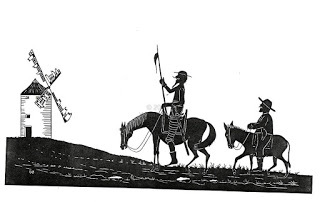
1605 The first edition of El ingenioso hidalgo Don Quijote de la Mancha (Book One of Don Quixote) by Miguel de Cervantes was published in Madrid.

1605 The first edition of El ingenioso hidalgo Don Quijote de la Mancha (Book One of Don Quixote) by Miguel de Cervantes was published in Madrid.
Published on January 16, 2016 02:00
January 15, 2016
History Trivia - Henry VIII becomes head of English Church
January 15

1535 Henry VIII declared himself head of English Church. He divorced his wife, Catherine of Aragon, to marry Anne Boleyn.

1535 Henry VIII declared himself head of English Church. He divorced his wife, Catherine of Aragon, to marry Anne Boleyn.
Published on January 15, 2016 02:30
January 14, 2016
History Trivia - Birth of Valdemar I of Denmark
January 14

1131 King Valdemar I of Denmark was born. In addition to winning independence from the Holy Roman Empire, he also gained the approval of the church for the dynastic rule of his family, the Valdemars.

1131 King Valdemar I of Denmark was born. In addition to winning independence from the Holy Roman Empire, he also gained the approval of the church for the dynastic rule of his family, the Valdemars.
Published on January 14, 2016 02:00
January 13, 2016
History Trivia - Knights Templar receive rules of their order
January 13

1128 Knights Templar (warrior monks) received the rules of their order, which was to police the Pilgrimage route to the Holy Land and provide services to the patriarch of Jerusalem.

1128 Knights Templar (warrior monks) received the rules of their order, which was to police the Pilgrimage route to the Holy Land and provide services to the patriarch of Jerusalem.
Published on January 13, 2016 02:00
January 12, 2016
History Trivia - Treaty of Toledo signed
January 12

1539 the Treaty of Toledo was signed by King Francis I of France and Holy Roman Emperor Charles V whereby both parties agreed to make no further alliances with England. The treaty came after Henry VIII of England split with Rome and Pope Paul III.

1539 the Treaty of Toledo was signed by King Francis I of France and Holy Roman Emperor Charles V whereby both parties agreed to make no further alliances with England. The treaty came after Henry VIII of England split with Rome and Pope Paul III.
Published on January 12, 2016 02:00
January 11, 2016
History Trivia - St. Paulinus of Aquileia, royal master of grammar to Charlemagne, dies
January 11
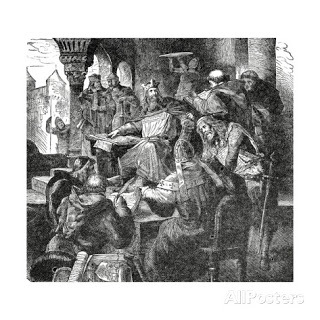
802 St. Paulinus of Aquileia died. He was royal master of grammar to Charlemagne at the Palace School and was appointed Patriarch of Aquileia (Italy) in 787 after Charlemagne conquered the duchyat the Palace School and was appointed Patriarch of Aquileia (Italy) in 787 after Charlemagne conquered the duchy

802 St. Paulinus of Aquileia died. He was royal master of grammar to Charlemagne at the Palace School and was appointed Patriarch of Aquileia (Italy) in 787 after Charlemagne conquered the duchyat the Palace School and was appointed Patriarch of Aquileia (Italy) in 787 after Charlemagne conquered the duchy
Published on January 11, 2016 02:30
January 10, 2016
History Trivia - Julius Caesar crosses the Rubicon
January 10

49 BC Julius Caesar crossed the Rubicon without disbanding his army, which signaled the start of civil war in Rome. Pompey and his supporters fled to Greece.

49 BC Julius Caesar crossed the Rubicon without disbanding his army, which signaled the start of civil war in Rome. Pompey and his supporters fled to Greece.
Published on January 10, 2016 02:00
January 9, 2016
History Trivia - Joan of Arc trial begins in Rouen
January 9

1431 Judges' investigations for the trial of Joan of Arc began in Rouen, France, the seat of the English occupation government

1431 Judges' investigations for the trial of Joan of Arc began in Rouen, France, the seat of the English occupation government
Published on January 09, 2016 02:30
January 8, 2016
History Trivia - Vikings attack Lindisfarne Island
January 8
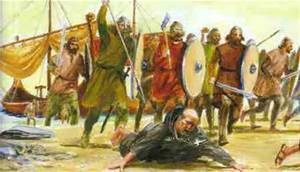
794 Vikings attacked Lindisfarne Island (northeast coast of England).
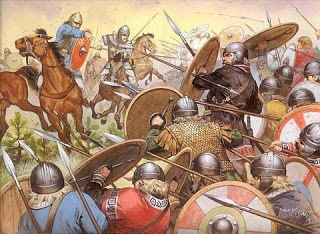
871 King Ethelred of Wessex and his brother Alfred (the Great) defeated the Danish Vikings at the Battle of Ashdown.

794 Vikings attacked Lindisfarne Island (northeast coast of England).

871 King Ethelred of Wessex and his brother Alfred (the Great) defeated the Danish Vikings at the Battle of Ashdown.
Published on January 08, 2016 02:00



